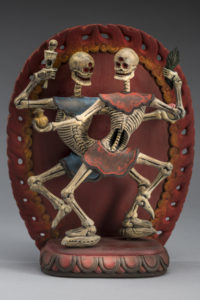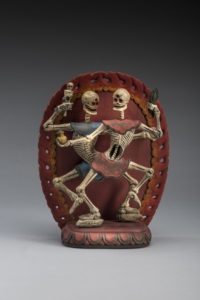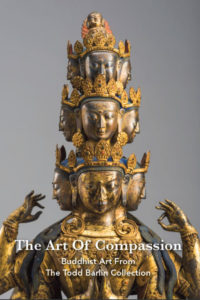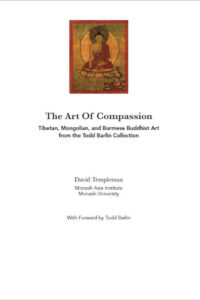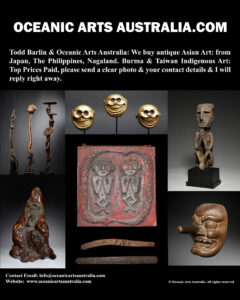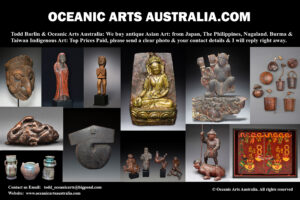A Superb Old Mongolian Buddhist Dancing Citipati Deities Mongolia
| Collection No. | TA-278 |
|---|---|
| Size | Height 24cm x 19cm width |
See more Fine Buddhist Art in Buddhist Art Gallery
A Superb Old Mongolian Buddhist Dancing Citipati Deities Mongolia
This finely carved and painted pair of dancing Citipati figures are from Mongolia. The two figures are carved separately as is the lotus form base & flaming background. They date from the early 20th century. Here they are seen dancing on white conch shells to display their ultimate purity despite their inhabiting frightening graveyards. The male figure in blue holds a representation of death while his female counterpart holds a fresh shoot of a plant. symbolizing the life that springs from death
” The skeleton figures, representing worldly spirits, in Tibetan Cham dances are often seen as jesters or servants for other minor worldly gods such as Yama. These Cham dancing skeletons, like the other characters found in dance such as the deer and yak-headed servants of Yama, are generally only found in narrative vignettes if found at all in Tibetan paintings. The most common dance represented in painting is generally known descriptively as the Black Hat Dance and specifically understood to be the Vajrakilaya Cham dance. There will of course be images or random skeletons found in wrathful deity paintings or in the many depictions of the charnel grounds where the relevant Sanskrit and Tibetan texts explicitly state that skeletons are found in cemeteries” Jeff Watt 4-2004 Himalayan Resources
Provenance: Mr Cito Cessna (1945-2009) Parkham Place Gallery Sydney Australia
The Todd Barlin Collection of Buddhist Art and Asian Arts
Exhibited & Published: The Art of Compassion: Buddhist Art from the Todd Barlin Collection 2018 by David Templeman Page 58
INQUIRE HERE
To see many more rare items and the finest masterpieces, please make an appointment with us to visit the gallery.
For all inquiries, please contact us.

